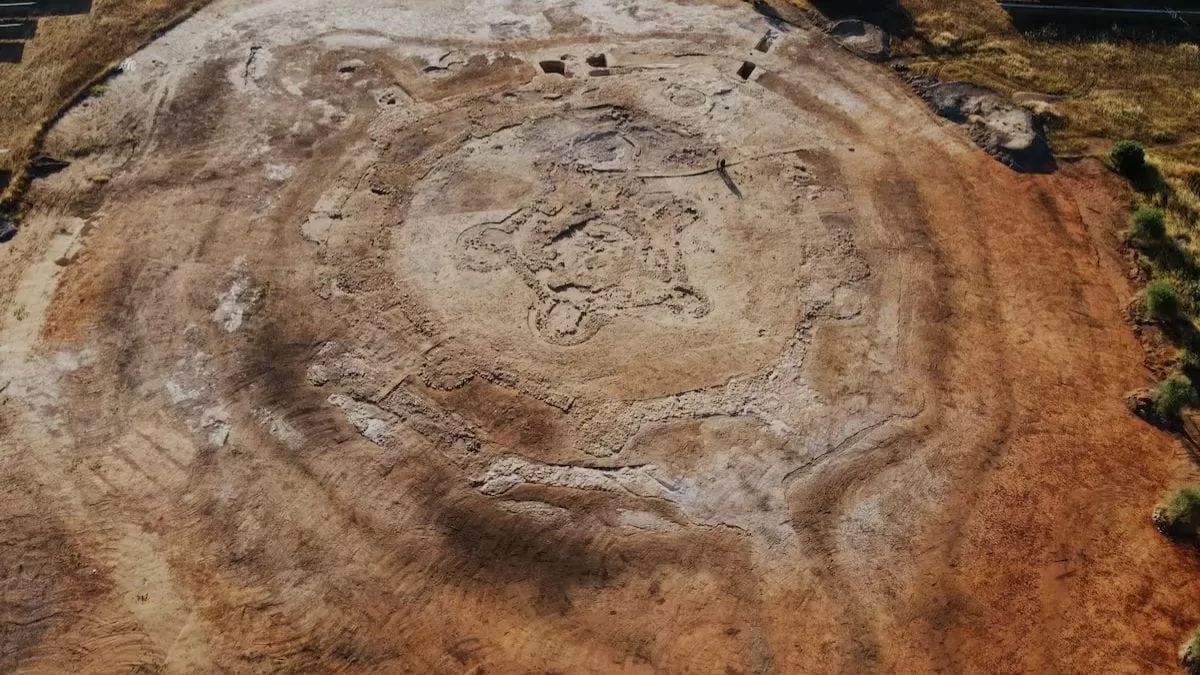A 5,000-year-old fortress in Spain has recently revealed a fascinating discovery that has left archaeologists and historians puzzled. The remains of a man, believed to be between the ages of 25 and 35, were found buried within the walls of the ancient fortress. What makes this discovery even more intriguing is the fact that the site had been abandoned for over 2,500 years, raising questions about why this man was buried there.
The fortress, known as La Bastida, is located in the southeastern region of Spain and is considered to be one of the largest and most well-preserved Bronze Age sites in Europe. It was first excavated in the late 19th century and has since been a source of valuable information about the ancient civilizations that once inhabited the area.
However, it was not until recently that archaeologists stumbled upon this unexpected Roman-era burial within the walls of the fortress. The remains of the man were found with a military dagger, indicating that he may have been a soldier. This has led experts to speculate that he could have been a deserter or a victim of a battle that took place during the Roman conquest of the Iberian Peninsula.
The discovery of this Roman-era burial has shed new light on the history of the fortress and the people who lived there. It has also raised questions about the relationship between the ancient civilizations that inhabited the area.
According to Miguel Ángel Mateo, the director of the excavation project at La Bastida, this discovery is significant as it provides evidence of the presence of the Roman army in the region. He also stated that this is the first time a Roman burial has been found within the walls of a Bronze Age fortress in Spain.
The man’s remains were found in a well-preserved state, with his skeleton intact and his military dagger still by his side. This has allowed archaeologists to gather valuable information about his physical characteristics and possible cause of death. The man was believed to be of average height and well-built, indicating that he may have been a strong and skilled soldier.
The discovery of this Roman-era burial has also sparked a debate among experts about the possible reasons behind the man’s burial within the fortress. Some believe that he may have been a deserter who sought refuge within the walls of the fortress, while others suggest that he could have been a victim of a battle that took place during the Roman conquest.
However, one thing is for sure, this discovery has opened up new avenues for research and has the potential to provide a better understanding of the ancient civilizations that once inhabited the region. It also highlights the complex and dynamic relationships between different civilizations during that time period.
The excavation at La Bastida is ongoing, and archaeologists are hopeful that further discoveries will be made. The fortress has already revealed many valuable artifacts and information, and this recent discovery only adds to its significance.
The local community is also excited about this discovery and has shown great interest in the ongoing excavation. They see it as an opportunity to learn more about their history and heritage and are proud to have such a significant site in their region.
The discovery of this Roman-era burial at La Bastida is a reminder of the rich and diverse history of Spain. It is a testament to the resilience and adaptability of the ancient civilizations that once inhabited the area. It also serves as a reminder that there is still so much to be discovered and learned about our past.
As the excavation at La Bastida continues, we can only hope that it will provide us with more fascinating insights into the lives of the people who lived there thousands of years ago. This discovery is a reminder that there is always more to uncover and that the past is full of surprises waiting to be revealed.

